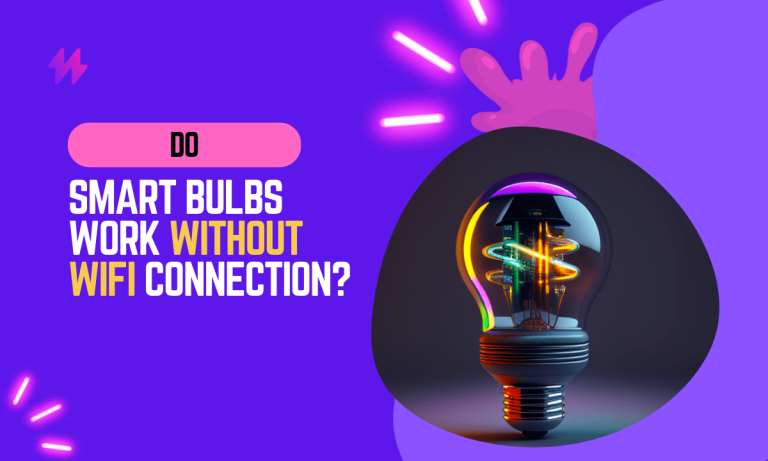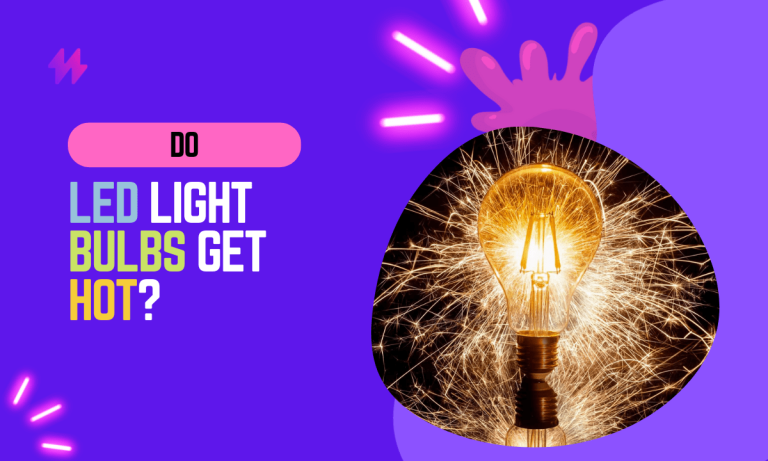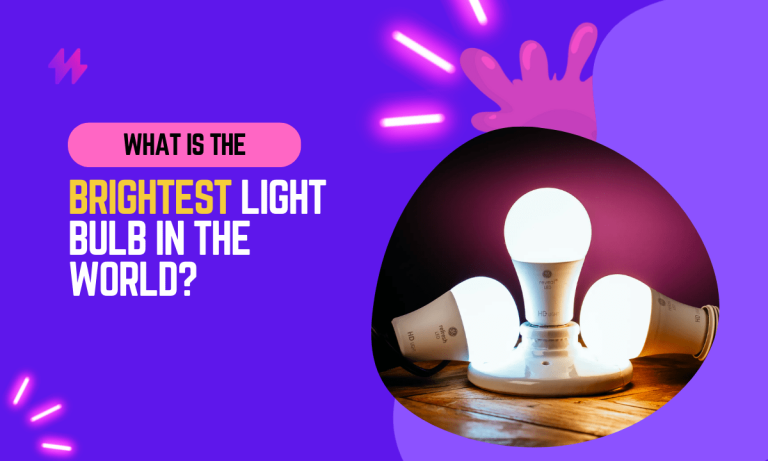Ultimate Guide to E26 Bulbs: What They Are and How to Choose Them

If you’re a house owner or stay on rent, chances are you’ve come across these common light bulbs at some point. But what exactly are E26 bulbs, and how do they differ from other types of light bulbs? In this blog, we’ll dive into the details of E26 bulbs, their features, and how to use them in your home.
E26 bulbs, characterized by their E26 screw base, serve as the standard light bulbs in many home lighting systems, offering compatibility with various lamp sockets and fixtures. Whether you’re replacing old incandescent bulbs with energy efficient lighting options or exploring the aesthetic appeal of decorative bulbs like vintage globe styles, the ultimate guide to E26 bulbs will help you understand the best choices for your space.
The Ultimate Guide to E26 Bulbs: What They Are and How to Choose Them | E27 Bulbs
E26 bulbs, also known as medium base bulbs, are named after their inventor, Thomas Edison, and the size of their base. The “E” stands for Edison, while the “26” refers to the diameter of the base in millimeters.
E26 bulbs are designed to fit into a standard light socket with a screw-in base, making them a popular choice for a wide range of lighting applications. Whether you’re looking to brighten up a room with a table lamp or add some ambiance with a string of outdoor lights, E26 bulbs are a versatile and cost-effective option.
Also read: Can you Paint LED light bulbs?
E26 bulbs have become a staple in modern lighting due to their accessibility and the variety of options available. For those interested in upgrading their lighting setup, exploring different light bulbs such as A19 bulbs and incandescent light bulbs can complement E26 bulbs effectively, enhancing the overall aesthetic and functionality of their spaces.
Understanding How an E26 Bulb Operates: A Comprehensive Guide
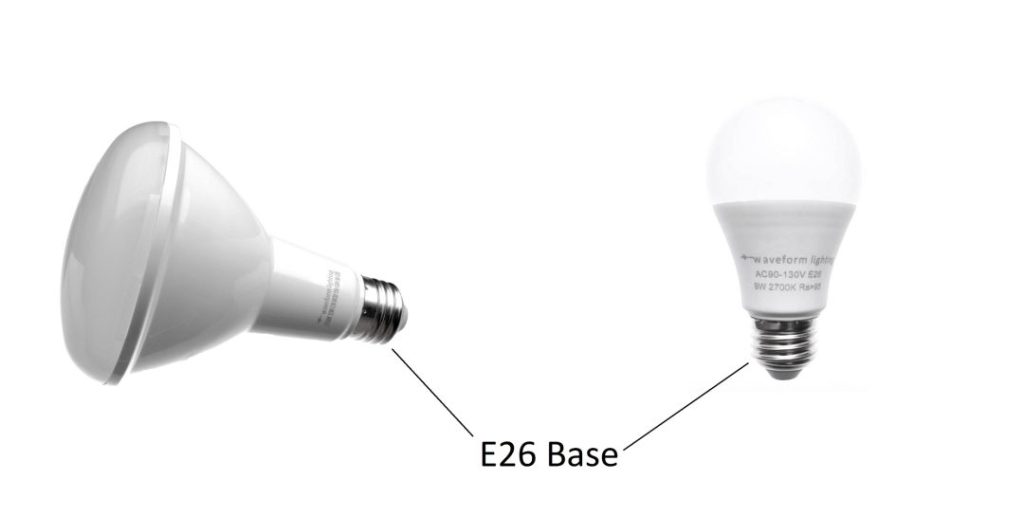
When you turn on the light switch, electricity flows through a series of wires and into the bulb. The electricity passes through a thin wire called a filament, which is located inside the bulb. As the electricity flows through the filament, it heats up and begins to glow, producing light.
The amount of light produced by an E26 bulb depends on the type of filament used and the wattage of the bulb. For example, a bulb with a higher wattage will produce more light than a bulb with a lower wattage.
In addition to producing light, E26 bulbs also produce heat. This is because the filament inside the bulb is heated to a high temperature in order to produce light. However, modern E26 bulbs are designed to be energy efficient, so they use less electricity and produce less heat than traditional bulbs.
E26 bulbs are well-known for their compatibility with a wide range of fixture types and bulbs today, making them suitable for general home lighting. The versatility of E26 sockets allows for the easy integration of both incandescent lamps and energy-efficient alternatives, such as LED lamps and compact fluorescent bulbs, into various decor styles.
Diverse Varieties of E26 Bulbs: Understanding Your Options
There are several types of E26 bulbs available, including incandescent, fluorescent, LED, and halogen. Each type has its own unique features and benefits and is best suited for different applications.
When selecting E26 bulbs, it’s essential to consider their compatibility with various lamp bases and sockets for optimal performance. Additionally, for those looking for a vintage touch, incandescent edison bulbs provide a charming aesthetic while still meeting standard lighting needs.
In-Depth Look at Incandescent Bulbs: Understanding E26 Options
Incandescent bulbs are the traditional type of light bulb that has been used for many years. They are known for their warm, yellowish light and are often used in living rooms, bedrooms, and other areas where a cozy atmosphere is desired. One of the main drawbacks of incandescent bulbs is that they are not very energy efficient, as they convert less than 5% of the electricity they use into light and the rest is wasted as heat.
Incandescent bulbs, although a tried and true choice for home lighting, are becoming increasingly overshadowed by more energy-efficient options such as fluorescent light bulbs and LED technology. While the cozy, warm glow of an incandescent lamp is hard to beat, advancements in light-emitting diodes (LED) and compact fluorescent lamps (CFLs) not only provide similar light quality but also reduce energy consumption significantly.
Fluorescent Bulbs: Understanding Their Features and Benefits
Fluorescent bulbs, also known as CFLs (compact fluorescent lamps), are a more energy-efficient alternative to incandescent bulbs. They use a different type of technology to produce light, involving a tube filled with a gas that emits UV light when electricity is applied. The UV light then activates a phosphor coating on the inside of the tube, which emits visible light. Fluorescent bulbs are often used in offices, schools, and other commercial settings due to their energy efficiency and long lifespan.
To further improve residential lighting, homeowners can consider using a combination of E26 lamps and LED technology, which enhances energy efficiency. Understanding the various bulb specifications, such as wattages and light bulb sizes, is crucial for selecting the right bulb that aligns with specific fixture types and household needs.
LED Bulbs: Understanding Their Benefits and Varieties
LED (light emitting diode) bulbs are the most energy-efficient type of bulb available today. They use a different type of technology to produce light, involving the movement of electrons through a semiconductor material. LED bulbs are known for their long lifespan, low energy consumption, and ability to produce a wide range of colors. They are often used in outdoor lighting, as well as in residential and commercial settings.
LED bulbs, which utilize light-emitting diode (LED) technology, are revolutionizing home and outdoor lighting due to their energy efficiency and longevity. The ultimate guide to E26 bulbs will provide further insights into how these advanced bulbs can be integrated seamlessly into a variety of light fixtures, ensuring optimal performance and aesthetic appeal.
Exploring Halogen Bulbs: Understanding Their Role in E26 Lighting Options
Halogen bulbs are a type of incandescent bulb that uses halogen gas to produce light. They are similar to traditional incandescent bulbs in that they use a filament to produce light, but the halogen gas helps to extend the lifespan of the bulb and makes it more energy efficient. Halogen bulbs are often used in task lightings, such as in kitchens and work areas, due to their bright white light.
Halogen bulbs are an efficient choice for bright, task-oriented lighting in areas like kitchens and workspaces, where clarity is essential. Their ability to provide high lumens output while maintaining durability makes them an attractive option for those looking to replace older incandescent bulbs with a more modern solution. For those interested in energy-efficient lighting, exploring the ultimate guide to E26 bulbs can enhance your understanding of various bulb types and how they work with standard lamp fixtures. Remember to consider the specifications and compatibility of E26 bulbs when making your choice for brighter bulbs in your home.
Is the E26 Bulb Considered a Standard Bulb?
Yes, E26 is a standard-size light bulb. It is also known as a medium base bulb, as it has a medium size base that fits into a standard light socket with a screw-in base.
E26 bulbs are regulated by the American National Standards Institute. They are used in a wide range of applications, including residential, commercial, and industrial settings, and can be used for general lighting, task lighting, accent lighting, and more.
In addition to E26 bulbs, there are also other standard-size light bulbs available, such as E27 (large base) and E39 (mogul base). It’s important to choose the correct type of bulb for your fixtures to ensure a proper fit and avoid any potential safety issues.
Also, Find out the difference between A19 vs A21 Light Bulb
E26 bulbs have become essential components for modern lighting systems due to their versatility and compatibility with various fixtures. As you explore the ultimate guide to E26 bulbs, remember that utilizing different bulb types, such as CFL lamps or fluorescent tube lights, can significantly improve the overall ambiance and efficiency of your home lighting.
Selecting the Ideal E26 Bulb for Your Needs
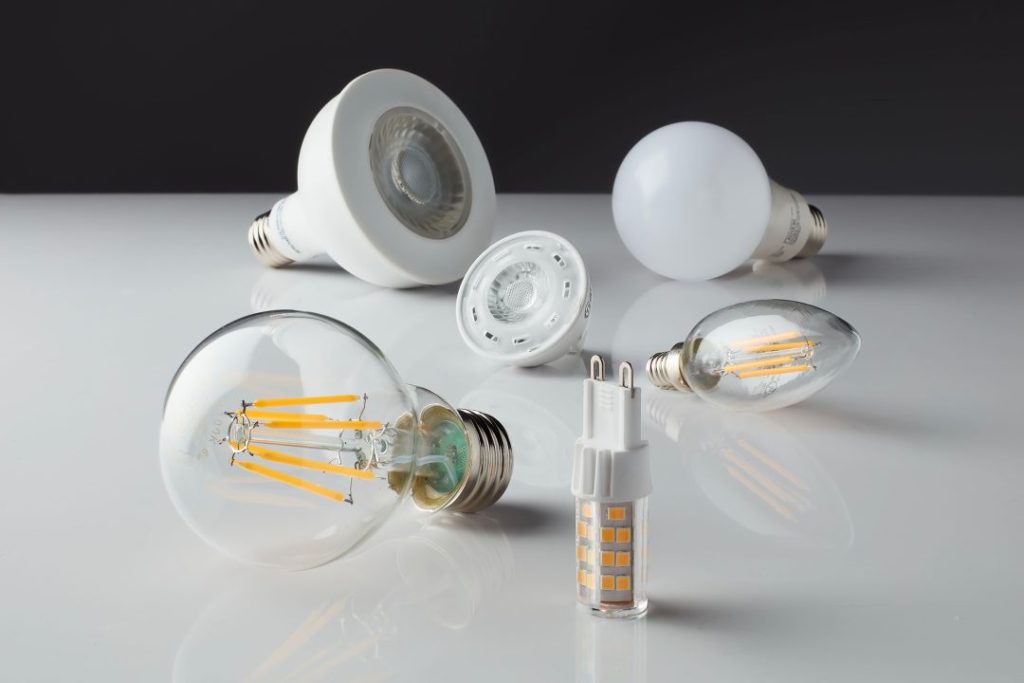
When selecting an E26 bulb, there are several factors to consider, including the type of bulb, the wattage, the color temperature, and the beam angle.
When selecting an E26 bulb, there are several factors to consider, including the type of bulb, the wattage, the color temperature, and the beam angle. Understanding the differences in light bulb types can lead to better choices in decorative lighting options that enhance the aesthetic of your home. Utilizing the ultimate guide to E26 bulbs: what they are and how to choose them will provide essential insights on optimizing your indoor lighting setup with compatible fixtures. Exploring various bulb specs will ensure that you select a brighter bulb capable of meeting your specific lighting needs.
Choosing the Right Type of Bulb: A Guide to E26 Options
As mentioned earlier, there are several types of E26 bulbs available, including incandescent, fluorescent, LED, and halogen. Each type has its own unique features and benefits, so it’s important to choose the right one for your needs. For example, if energy efficiency is a top priority, an LED or fluorescent bulb may be the best choice.
When choosing the right E26 bulbs for your home, it’s crucial to consider their compatibility with various lamp types and fixture sizes. Understanding the different types of bulbs, including LED, fluorescent lights, and incandescent options, can significantly affect your overall lighting experience and performance in areas like desk lamps and ceiling lights.
Understanding Wattage in E26 Bulbs: Key Considerations
The wattage of a bulb refers to the amount of electricity it uses. A higher wattage means that the bulb uses more electricity and produces more light, while a lower wattage means that the bulb uses less electricity and produces less light. It’s important to choose the right wattage for your needs, as using a bulb with too high of wattage can cause it to burn out faster and may also be a safety hazard.
When selecting an E26 bulb, it’s vital to understand the specific bulbs specs to ensure they meet your lighting needs effectively. By integrating smart light bulbs or comparing them with incandescent E26 bulb options, you can achieve optimal brightness and an inviting ambiance in your home.
Understanding Color Temperature: A Key Factor in Choosing E26 Bulbs
The color temperature of a bulb refers to the hue of the light it produces. Bulbs with a lower color temperature, such as 2700K, produce a warm, yellowish light that is often used in living rooms and bedrooms. Bulbs with a higher color temperature, such as 5000K, produce a cooler, bluish light that is often used in offices and task lighting.
When considering the color temperature of light bulbs, it’s important to choose one that fits the intended atmosphere of each room in your home. The “ultimate guide to E26 bulbs: what they are and how to choose them” can offer valuable information on various bulb types and their compatibility with standard lamp fixtures, helping you create the perfect lighting scheme for different spaces. The right E26 light bulb will ensure that your environment is both functional and aesthetically pleasing.
Understanding Beam Angle in E26 Bulbs: A Key Factor to Consider
The beam angle of a bulb refers to the spread of the light it produces. Bulbs with a wide beam angle, such as 120 degrees, produce a broad spread of light that is ideal for general lighting applications. Bulbs with a narrow beam angle, such as 30 degrees, produce a focused beam of light that is ideal for task lighting or spotlighting.
When selecting a light bulb, it is essential to consider the function of the bulb in your specific environment, whether for general usage or focused tasks. Using the right combination of E26 bulbs and other compatible bulb types like MR16 bulbs or E12 candelabra bulbs can enhance both the aesthetics and efficiency of your indoor lighting.
E26 vs E27: Understanding the Key Differences
E26 and E27 are both types of light bulbs that are commonly used in various parts of the world. While they may seem similar at first glance, there are a few key differences between the two that you should be aware of.
While E26 and E27 bulbs share common uses in a variety of light fittings, their differences can significantly affect compatibility with lamp bases. Whether it’s for vintage globe bulbs or modern LED options, knowing the specific bulb codes and socket types, such as E26 lampholders and E27 standards, will ensure you choose the perfect bulb for your lighting needs. It’s important to thoroughly understand how E26 bulbs work to enhance the effectiveness of your electronic appliance connections.
Understanding E26 Bulb Base Size and Compatibility
The main difference between E26 and E27 bulbs is the size of the base. E26 bulbs have a medium base that is 26 millimeters in diameter, while E27 bulbs have a larger base that is 27 millimeters in diameter. This may seem like a small difference, but it can be important when choosing a light bulb for your fixtures. E26 bulbs are more commonly used in the United States and Canada, while E27 bulbs are more commonly used in Europe and other parts of the world.
Understanding the distinction between E26 and E27 light bulb bases is essential when selecting the appropriate bulb for your lighting needs. By using the right E26 base bulbs in conjunction with suitable adapters, you can ensure compatibility with various lamp fixtures, enhancing your space with brighter bulbs and modern lighting solutions.
Revised Heading: Understanding E26 Bulb Compatibility
Another difference between E26 and E27 bulbs is compatibility with light fixtures. E26 bulbs are designed to fit into standard light sockets with a screw-in base in the United States and Canada, while E27 bulbs are designed to fit into standard light sockets with a screw-in base in Europe and other parts of the world. It’s important to make sure that you are using the correct type of bulb for your fixtures to ensure a proper fit and avoid any potential safety issues.
When choosing bulbs for your home, understanding the differences between E26 and E27 standards is essential for ensuring compatibility with your fixtures. It’s also important to consider the specific wattage equivalent and light bulb types you need, such as candle bulbs or led downlights, to create the desired atmosphere and functionality in your living spaces.
Final Thoughts on E26 Bulbs
In summary, An E26 bulb is a type of light bulb that fits into a standard medium screw base, commonly known as an E26 base. It is commonly used in household lighting fixtures such as table lamps and ceiling fixtures in the United States and Canada. There are various types of E26 bulbs available, including incandescent, fluorescent, LED, and halogen. When choosing an E26 bulb, you should consider the type of bulb, wattage, color temperature, and beam angle to ensure it is suitable for your needs.
Understanding the specific characteristics and advantages of E26 bulbs is crucial for making informed lighting choices that meet both functional and aesthetic needs. The E26 designation refers to the type and size of the base—26 millimeters in diameter—which is standard across many household lighting fixtures in North America. This universality makes E26 bulbs a versatile and widely compatible option for a variety of lighting environments, from residential to commercial spaces. When selecting E26 bulbs, it is important to consider the type of bulb—whether LED, incandescent, or CFL—that will best suit the lighting requirements of the space. LEDs are often preferred for their energy efficiency and longevity, providing a sustainable option that reduces the frequency of replacements and lowers energy bills.
Moreover, the choice of color temperature and brightness, measured in lumens, can significantly affect the ambiance and functionality of a room. Warm white lights typically create a cozy, inviting atmosphere, ideal for living rooms and bedrooms, while cooler white lights enhance concentration and visibility, making them suitable for kitchens, bathrooms, and offices. Understanding these nuances enables consumers to tailor their E26 bulb selections to enhance the comfort and usability of their environments effectively. Additionally, with advances in smart lighting technology, E26 bulbs are now available with features such as dimmability, color changing, and connectivity with home automation systems, offering even greater control and customization of home lighting. By considering these factors, one can make the most of the versatility and broad compatibility of E26 bulbs to improve both the functionality and aesthetic appeal of their lighting solutions.
Ultimate Guide To E26 Bulbs: What They Are And How To Choose Them | E26 Bulb Applications and Usage
E26 bulbs serve a variety of purposes in both residential and commercial settings, making them a popular choice for anyone looking to upgrade their lighting. This ultimate guide to E26 bulbs explores their applications, from traditional uses in ceiling lamps and desk lamp fixtures to modern implementations in smart home products like Govee bulbs. The term E26 refers to the standard screw base size that fits most residential light fixtures, facilitating light bulb replacements across common lamp types. E26 bases are designed to accommodate various bulb components, including a19 bulbs, r20 bulbs, and vintage filament edison LEDs, allowing for versatile options in decorative lighting. These bulbs efficiently replace old bulbs with comparable incandescent bulb wattage, ensuring full brightness and optimal light output in areas like driveway lighting or hall lighting. Their compatibility with both E27 and E12 bases expands their utility, making them ideal for everything from pendant lights to electronic appliance store displays. Understanding E26 standards and light bulb codes empowers consumers to make informed decisions when selecting the perfect E26 bulb for their lighting needs.
Ultimate Guide to E26 Bulbs: What They Are and How to Choose Them | Common Uses for E26 Bulbs
E26 bulbs are commonly found in numerous applications, making them highly versatile. These standard screw base bulbs are typically used in residential settings, such as table lamps, ceiling lights, and decorative fixtures. From the first light bulbs to modern LED options, E26 bulbs have remained a popular choice for standard household lighting. They illuminate everything from nightlights to recessed lighting, providing either warm candlelight or bluer daylight CFLs depending on your preference.
Choosing the right E26 bulb can depend on the specific fixtures involved. E27 lamp bases are often compatible with E26 bulbs, offering flexibility in usage. Whether you’re seeking a 60-watt equivalent for your living room or something more decorative for a gazebo, understanding your voltage requirements and the appropriate lampholders is essential. Transitioning from common E12 candelabra bases to E27 sockets may also be necessary when upgrading to more modern lighting solutions. Knowing how E26 bulb work with various styles like A19 lamps or a decorative bulb style helps ensure you achieve the desired ambiance in any space.
Tips for Installing E26 Bulbs Safely
Installing E26 bulbs requires careful attention to safety protocols to avoid hazards. Always ensure that the power is turned off before replacing a light bulb. This applies to both residential and commercial spaces, where you may encounter various bulb types like a21 lamps or e27 bulb bases. It’s important to use appropriate lamp holders, such as e27 lampholders for e27 lamps, to guarantee a secure fit. Avoid using a burnt-out bulb or worn-out sockets, as these can lead to electrical malfunctions. Handling the light bulb with care is also crucial; remember that standard screw-in bulbs like the e26 cap are designed for easy installation by hand.
Choosing the right environment for your E26 bulb is equally essential. Ensure the fixture is rated for the wattage of the new bulb, whether it’s an informative light bulb or a fluorescent type like 48-inch fluorescent bulbs. Avoid using e12 lamp fixtures with an e26 cap, as they are not compatible. Keep an eye on the type of light produced, whether it’s a yellow candlelight ambiance or a bright, directional lamp effect. Using proper plugs and avoiding overloading circuits will help maintain safety during usage. Remember to consult the Ultimate Guide to E26 Bulbs: What They Are and How to Choose Them for comprehensive information on different bulb types and their applications.

